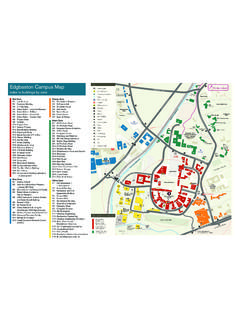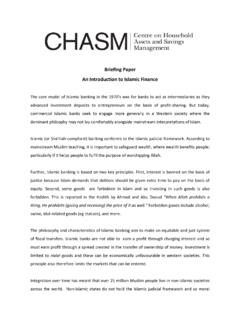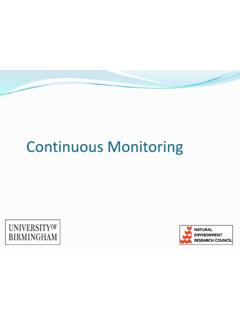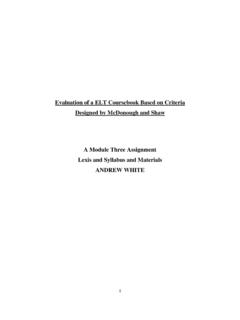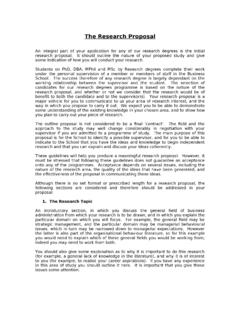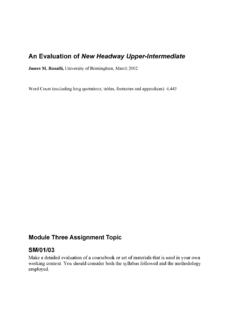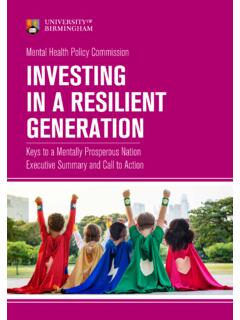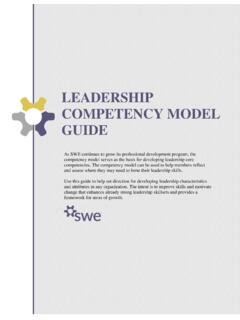Transcription of MANAGING EMPLOYEES DURING THE COVID-19 …
1 MANAGING EMPLOYEES DURING the COVID-19 pandemic and the future of work1 MANAGING EMPLOYEES DURING THE COVID-19 PANDEMIC: Flexible working and the future of workSarah Forbes, Holly Birkett, Lowri Evans, Heejung Chung and Julie WhitemanManaging EMPLOYEES DURING the COVID-19 pandemic and the future of work2 MANAGING EMPLOYEES DURING the COVID-19 pandemic and the future of work3 Table of figures4 Foreward5 Executive summary61 Introduction92 Patterns of Working From Home Before and Since Lockdown103 Supporting Working From Home12 Many organisations are providing extra support for those working from home12 Other support was also offered to employees13 Managers qualitative responses.
2 Most significant struggles DURING lockdown144 Managers Experiences of MANAGING EMPLOYEES Working From HomeManagers have had generally positive experiences of staff working from home since the COVID-19 lockdown16 Negative experiences of MANAGING homeworkers since lockdown18 Managers support for parents19 Managers qualitative responses: Most significant learning experiences205 Future Preferences and Attitudes to Working From Home23 Managers are more supportive of working from home in the future23 Managers qualitative responses: Future attitudes to working from home256 Conclusion267 Policy recommendations27 Recommendations for organisations/managers27 Recommendations for policymakers288 Methodology/About the Project29 References31 Acknowledgements32 Author Information33 TABLE OF CONTENTM anaging EMPLOYEES DURING the COVID-19 pandemic and the future of work4 Figure 1.
3 Percentage of managers reporting reason why EMPLOYEES /more EMPLOYEES were not working from home before lockdown by manager s work location10 Figure 2. Managers reporting the percentage of EMPLOYEES working from home before and since the COVID-19 lockdown11 Figure 3. Percentage of managers reporting tools supplied by their organisation to EMPLOYEES to assist with working from home before and since the COVID-19 lockdown12 Figure 4. Percentage of managers reporting their organisation as supplying support to EMPLOYEES since the COVID-19 lockdown by organisation size (number of EMPLOYEES )13 Figure 5.
4 Percentage of managers reporting they agreed or strongly agreed with attitudinal statements about working from home by place of work16 Figure 6. Percentage of managers reporting they agreed or strongly agreed with attitudinal statements about working conditions16 Figure 7. Percentage of managers reporting that flexible workers are just as likely to get promoted within their organisation by organisation size (number of EMPLOYEES )17 Figure 8. Percentage of managers agreeing or strongly agreeing with statements regarding flexible working by role17 Figure 9.
5 Percentage of managers agreeing or strongly agreeing to statement regarding trust toward EMPLOYEES since lockdown18 Figure 10. Percentage of managers agreeing or strongly agreeing that working from home led to isolation18 Figure 11. Percentage of managers agreeing or strongly agreeing to statements about supporting EMPLOYEES and training19 Figure 12. Percentage of managers reporting that their organisation has a parenting group by industry19 Figure 13. Percentage of managers agreeing or strongly agreeing with statements on care giving responsibilities by role19 Figure 14.
6 Percentage of managers who expect organisations to be more supportive of various flexible working arrangements in the future by industry 23 Figure 15. Percentage of managers reporting their organisations being likely or very likely to make changes to senior jobs24 Figure 16. Percentage of managers reporting their organisation as likely or very likely to make changes around flexible working/ homeworking24 Figure 17. Percentage of respondents by industry30 TABLE OF FIGURESM anaging EMPLOYEES DURING the COVID-19 pandemic and the future of work5 Professor Joanne DuberleyDeputy Pro-Vice-Chancellor (Equality, Diversity and Inclusion) and Professor of Organisational Studies, University of BirminghamFOREWORDG ender inequality persists in UK workplaces.
7 In 2019 the Gender Pay Gap was and only 10% of executive roles are held by women in STEM companies and 7% in non-STEM companies. Driven in part by the Davies Review and the Hampton Alexander Report, Government and many Businesses have developed new policies and initiatives to start to break down the enduring barriers women can face in progressing their careers, particularly those around family. However, progress has continued to be is now clear that the COVID-19 pandemic has radically changed many working practices and led to a seismic shift in the number of EMPLOYEES working from home and working more flexible hours.
8 Whilst many have faced huge difficulties, the pandemic does have the potential to act as a catalyst for a giant step forward in this area, to break down relentless gendered cultural norms around childcare to change the ways we work across the UK. This important research project from the University of Birmingham and the University of Kent can help us move forward by developing the evidence base and providing momentum for ongoing change in working practices. The first report in the series showed that EMPLOYEES want more flexibility, most want to be able to work from home on a regular basis and even more importantly, they plan to ask to formalise these new arrangements when the pandemic is under control.
9 Equally important, we see managers are embracing flexible working and in many cases developing a new-found trust and pride in their teams while working remotely DURING the pandemic. This is such positive news and provides the foundations for a step change in the ways we work in the future and the flexibility EMPLOYEES can expect. Of course, this agenda needs to be managed thoughtfully and sensitively, there are some sectors where working from home may not be possible but other forms of flexible working could work. There are many EMPLOYEES who would like to continue to work permanently in a traditional office space and even those who would prefer to work from home are likely to want to collaborate periodically in a physical office space.
10 Crucially, flexible working is only beneficial to employers and workers if it is properly supported with effective tools, safe and comfortable remote working spaces, properly trained managers and wellbeing support. It is also important for businesses and policymakers to think about the wider impacts of these changes to ways of working for the economy and particularly what this means for cities and now is the time to leverage these findings and use them to encourage organisations to be more actively supportive of flexible working by opening up discussions with EMPLOYEES about how they would like to work in the future and what would be of most benefit to both the employee and the organisation.
